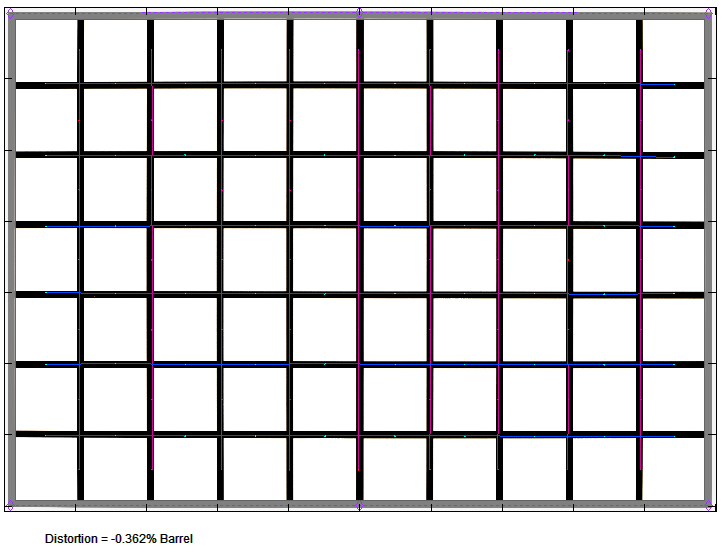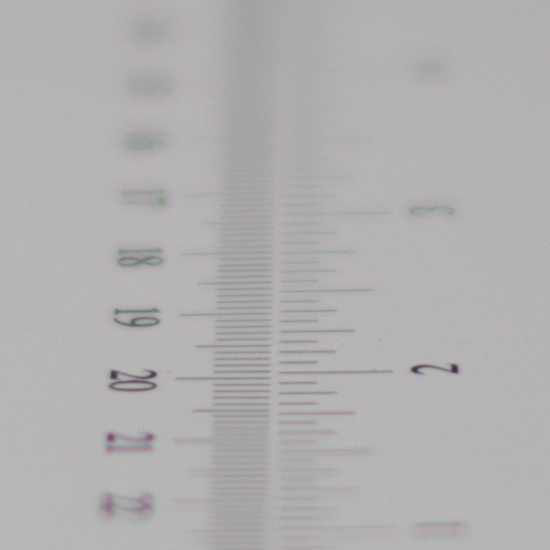|
Pentax SMC DA 50mm f/1.8 - Review / Test - Analysis |
|
Lens Reviews -
Pentax
|
|
Page 2 of 3

Distortion
Typical for standard prime lenses, the amount of (barrel-)distortion is negligible.

Vignetting
There is a bit of light falloff at fully open aperture. However, at just ~0.7EV (f-stops), it isn't overly disturbing. The issue is already gone from f/2.8 onward.

MTF (resolution)
Standard prime lenses have been around since the dawn of time thus their design has been optimized over decades. The Pentas DA 50mm f/1.8 may be "cheap" but the resolution characteristic is respectable. The center quality is already very good at f/1.8 whereas the borders/corners struggle here. However, the outer image region recovers when stopping down a little. At f/2.8 it reaches good to very good levels already. The peak performance is reached at f/4 and f/5.6 with very good to excellent results across the image field.
The field curvature is minimal. The centering quality of the tested sample was Okay.
Please note that the MTF results are not directly comparable across the different systems!
Below is a simplified summary of the formal findings. The chart shows line widths per picture height (LW/PH) which can be taken as a measure for sharpness.
If you want to know more about the MTF50 figures you may check out the corresponding Imatest Explanations

Chromatic Aberrations (CAs)
Chromatic aberrations (color shadows at harsh contrast transitions) are extremely well controlled and negligible.

Bokeh
One of the primary value proposition of a fast 50mm lens is the ability of creating a shallow depth-of-field. As such the quality of the bokeh (rendering of the out-of-focus blur) is a major quality criteria. Unfortunately the Pentax lens struggles somewhat in this respect.
Below are image crops showing the background- and foreground bokeh. As you may observe, the blur is smeared resulting in a combination of smoothly smeared and fairly hard edges in the focus transition zone.
Note: Of course, just like any lens it can produce a complete blur if the focus spread is substantial enough. However, this does not define the bokeh.
 Vice versa the rendition of the out-of-focus highlights is very well executed. The inner highlight zone is very smooth and the discs are just slightly outlined. The outlining is reduced by stopping down. Traces of the aperture share are just visible at f/2.8 and fairly obvious from f/4.
Vice versa the rendition of the out-of-focus highlights is very well executed. The inner highlight zone is very smooth and the discs are just slightly outlined. The outlining is reduced by stopping down. Traces of the aperture share are just visible at f/2.8 and fairly obvious from f/4.

Bokeh Fringing
Bokeh fringing is a common issue with fast glass. As you can notice below the halos have different colors - magenta (red + blue) in front of the focus point and green beyond.
Unsurprisingly the issue is very pronounced at full open aperture. Stopping down reduces the amount of bokeh fringing but it's still obvious at f/2.8 and still present at f/4. The fringing is pretty much gone at f/5.6.
|
Move the mouse cursor over the f-stop marks below to observe the respective LoCAs
|
| f/1.8 |
f/2.8 |
f/4 |
f/5.6 |
|

|
|